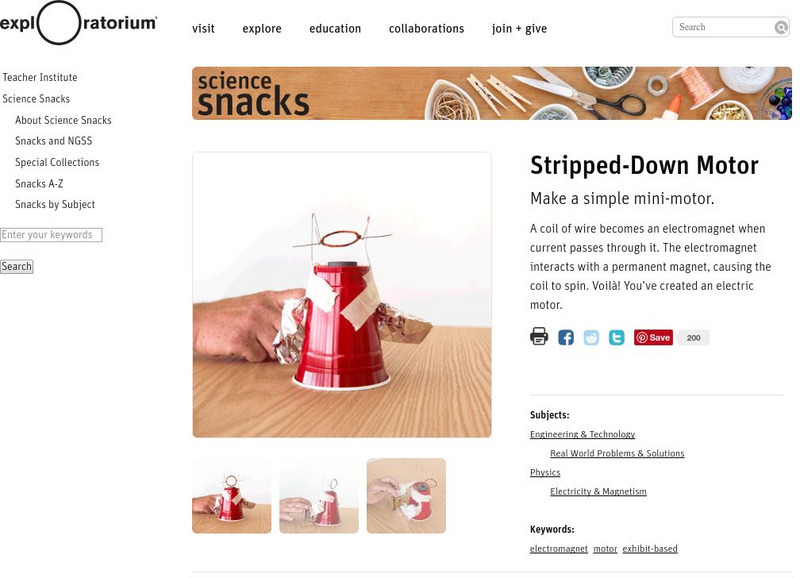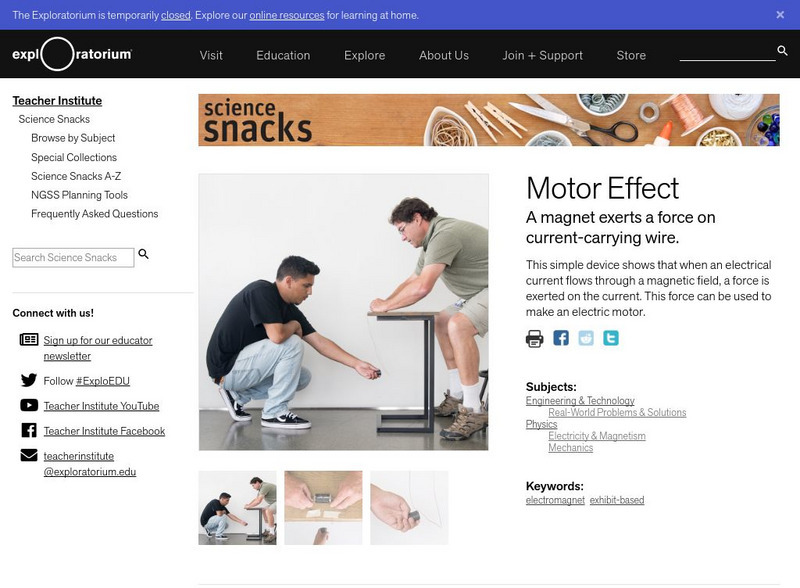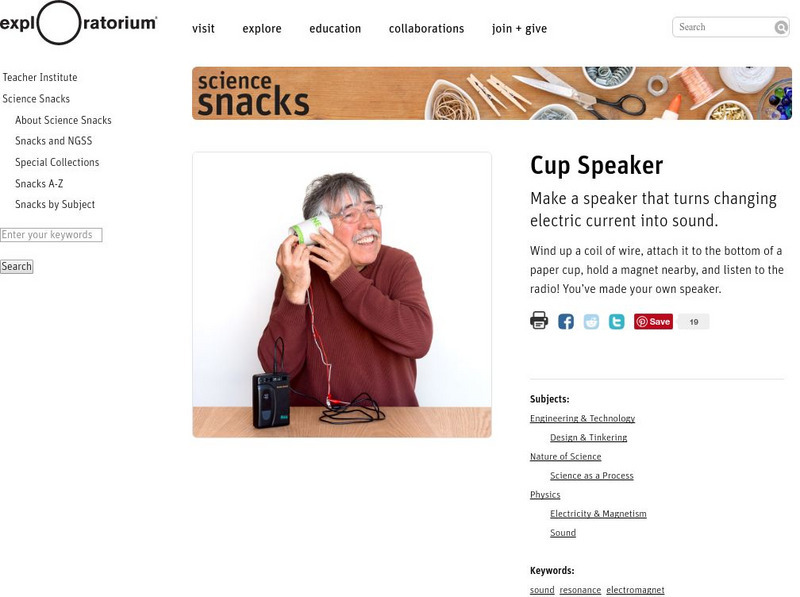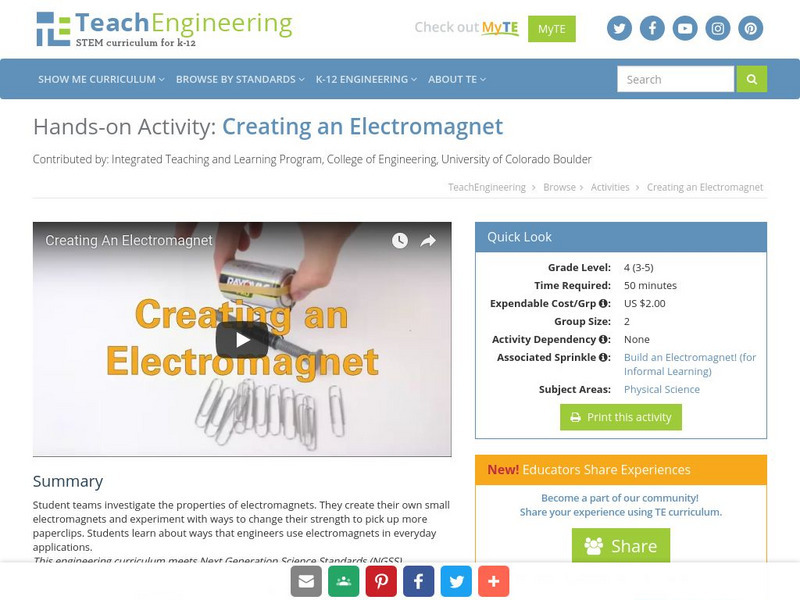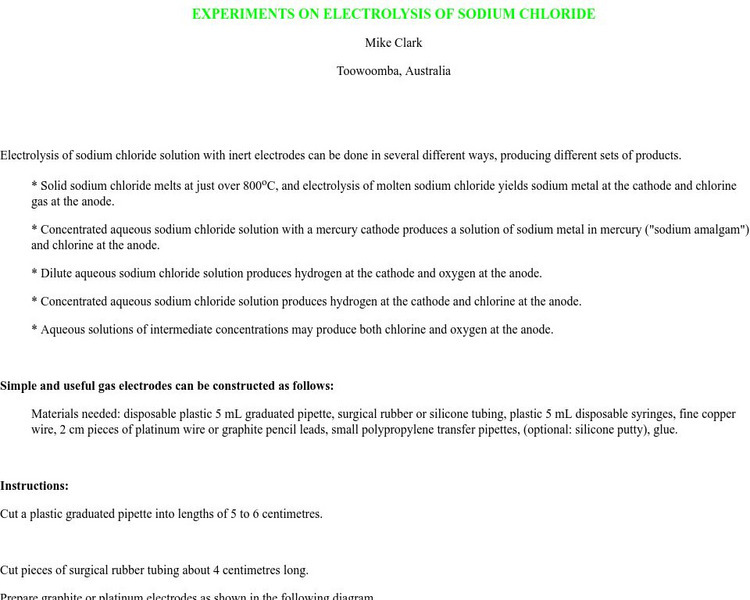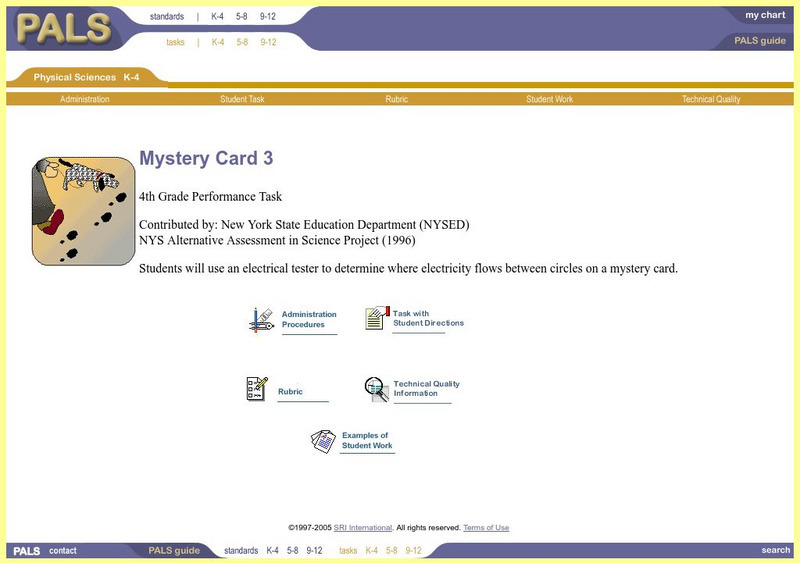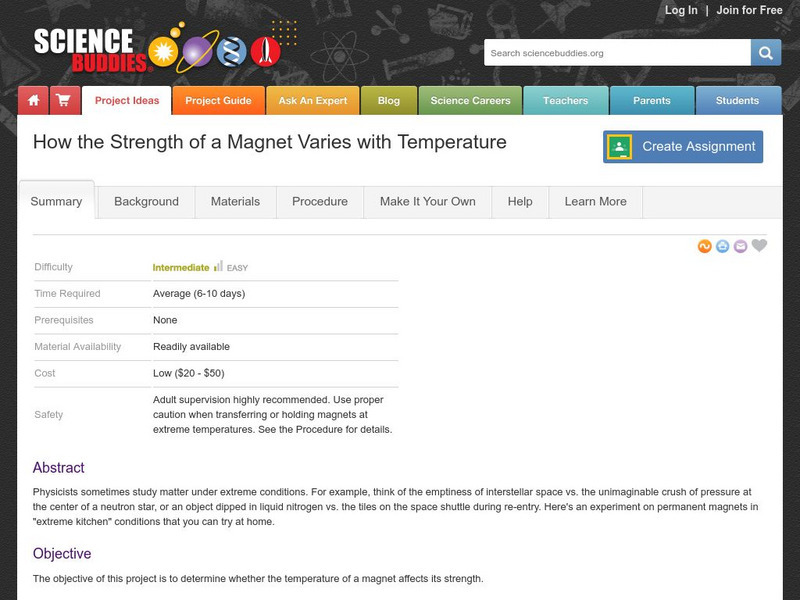Hi, what do you want to do?
Exploratorium
Exploratorium: Science Snacks: Magnetic Pendulums
See how electricity and magnetism interact with this activity. Activity has students creating a current by swinging a copper coil through a magnetic field. The copper coil will start a second coil swinging as well.
Exploratorium
Exploratorium: Science Snacks: Stripped Down Motor
Learn how to make an electric motor in this simple activity.
Physics Aviary
Physics Aviary: Practice Problems: Mass and Speed of a Particle
Determine the mass and speed of a particle being fired through variable magnetic and electric fields. This problem is done after students determine the charge of an electron using the Millikan Oil Drop Experiment.
Exploratorium
Exploratorium: Science Snacks: Motor Effect
Create a simple device to see how a force is exerted on a current by a magnetic field. This activity shows how an electric motor can be made with this force.
Exploratorium
Exploratorium: Science Snacks: Cup Speaker
This activity will have students creating their own speaker with a paper cup, coil of wire, and magnet. The speaker operates by changing electric current into sound.
TeachEngineering
Teach Engineering: Building an Electromagnet
Student teams investigate the properties of electromagnets. They create their own small electromagnet and experiment with ways to change its strength to pick up more paper clips. Students learn about ways that engineers use...
Colorado State University
Little Shop of Physics: The Amazing Physics of Everyday Objects
Try out these experiments you can do with items you might already have around the house: "Two Ball Bounce," "Cartesian Diver," "Straw Flute," "Bernoulli Ball," and others. Two experiments, "Imploding Pop Can" and "Balloon in a Bottle,"...
Exploratorium
Exploratorium: Science Snacks: Flying Tinsel
Can you make tinsel fly? In this activity, experiment with positive and negative charges to suspend tinsel into the air!
Concord Consortium
Concord Consortium: What Are Nature's Building Blocks?
Activity 3 of this module investigates: How do we know what's inside an atom? From Ernest Rutherford's Gold Foil Experiment to his investigation of the Plum Pudding model, students become aware of the Nuclear Model of an Atom. Also in...
Science Buddies
Science Buddies: Build a Reed Switch Motor
After building a simple electric motor from a kit, with this experiment you can explore how voltage affects motor speed. The Science Buddies project ideas are set up consistently beginning with an abstract, objective, and introduction,...
Other
Lcs: Experiments on the Electrolysis of Sodium Chloride
Complete directions several methods of conducting the electrolysis of sodium chloride solution. Helpful tips, discussion and a diagram of the apparatus and set-up is provided. Easily adaptable as a student lab or project.
Thinkport Education
Thinkport: Analyzing Data Sources and Author's Purpose: Electric Currents
In this science-themed literacy lesson, students learn how to determine the author's purpose and follow the development of that purpose.
PBS
Pbs: American Experience: Rescue at Sea
Companion website to the PBS documentary on the collision of two ships in 1909 and the reliance on the newly invented telegraph for rescue.
Other
Experience Hendrix: The Official Jimi Hendrix Website
This is the official Jimi Hendrix website. Here you will find much information on this rock legend including audio, articles and pictures.
Smithsonian Institution
Lemelson Center: Spark!lab: Make a Light Bulb
This lab shows students how to make a light bulb using 6V battery, wire, cork, and a nail. Print a form where you can record your results.
SRI International
Performance Assessment Links in Science: Mystery Card 3
Straightforward introduction to electrical circuits using minimal materials and time. Students learn about the basics of electrical circuits by experimenting with "mystery cards" -- index cards with hidden aluminum foil used to conduct...
Museum of Science
Museum of Science and Industry: Online Science: Make a Circuit Board
Step-by-step illustrated instructions showing how to build a circuit board using everyday materials.
Science Buddies
Science Buddies: A Battery That Makes Cents
Batteries are expensive to purchase in a store, but you can make one your self for exactly 24 cents. In this experiment, you will make your own voltaic pile using pennies and nickels and determine how many coins in a pile will make the...
Other
University of Liverpool: Matter Initiative for Schools a Level Resources
This site features numerous interactive resources (such as simulations, interactive exercises, experiments, etc.) designed for teachers and students of the physical sciences. Some of the resources are available only on CD-ROM, but most...
Science Buddies
Science Buddies: How the Strength of a Magnet Varies With Temperature
Physicists sometimes study matter under extreme conditions. For example, think of the emptiness of interstellar space vs. the unimaginable crush of pressure at the center of a neutron star, or an object dipped in liquid nitrogen vs. the...
University of New South Wales (Australia)
University of New South Wales: Einstein Light
Einstein Light highlights the Theory of Special Relativity and related topics. Learn how Galileo, Maxwell, and Einstein contributed to our knowledge of relativity, electricity, magnetism, and time by watching fun, interactive modules.
Science Buddies
Science Buddies: Shaking Up Some Energy
Shake N' Light flashlights have been advertised on televisions across the nation in the recent year. But many do not understand just how they get energy to light up the bulb without using batteries. Do this experiment to make your own...
National High Magnetic Field Laboratory
Magnet Academy: Luigi Galvani
Luigi Galvani was a pioneer in the field of electrophysiology, the branch of science concerned with electrical phenomena in the body. His experiments with dissected frogs and electrical charges led him to suggest the existence of a...
National High Magnetic Field Laboratory
Magnet Academy: Hans Christian Orsted
A discovery by Hans Christian Orsted forever changed the way scientists think about electricity and magnetism. While preparing to perform an experiment during a lecture at the University of Copenhagen, he found that the magnetized needle...






